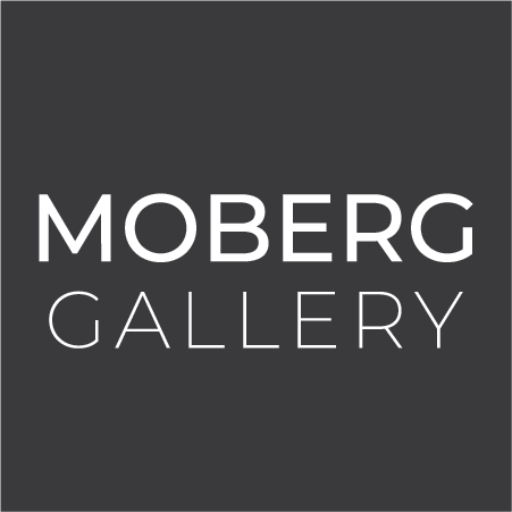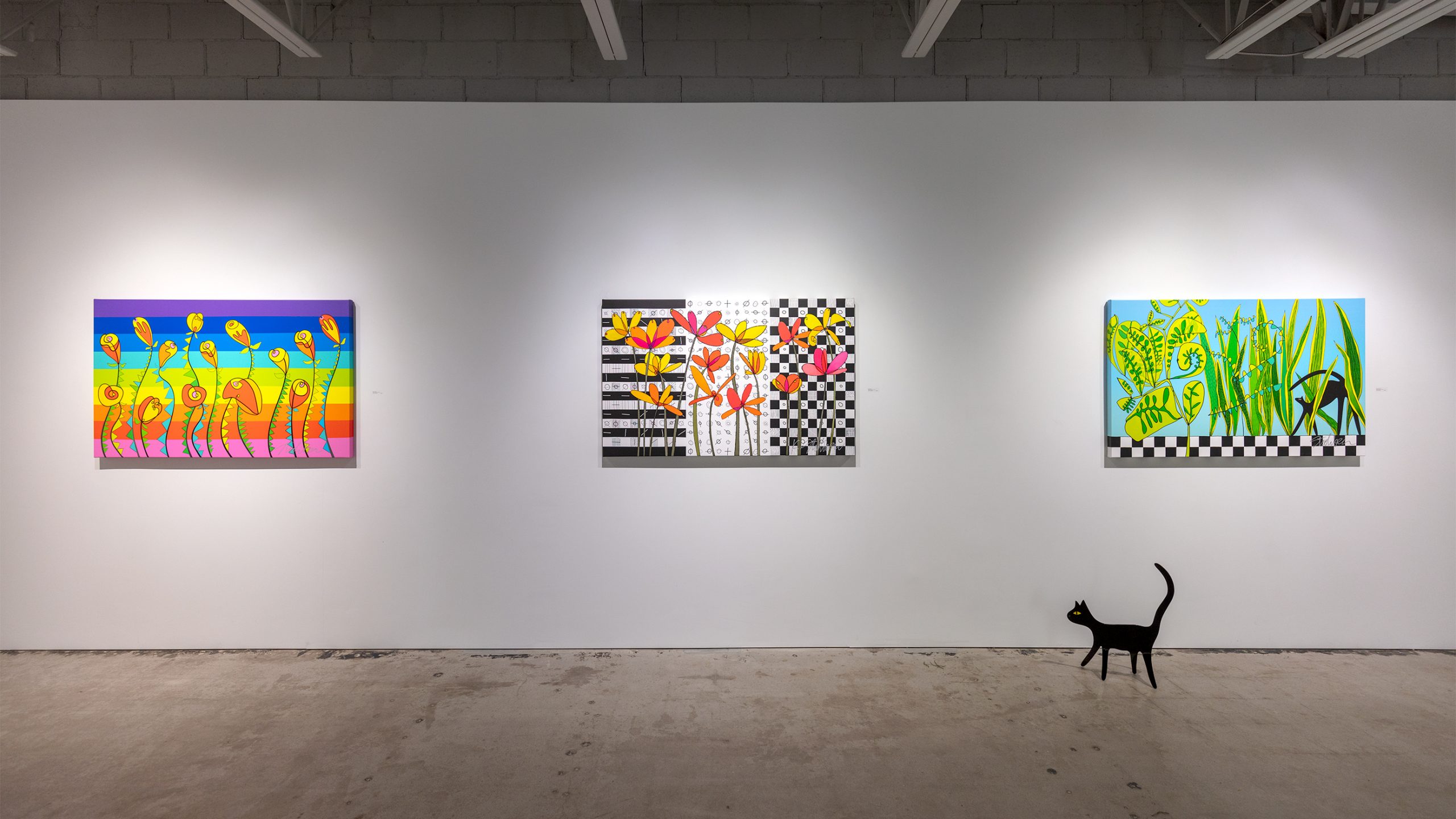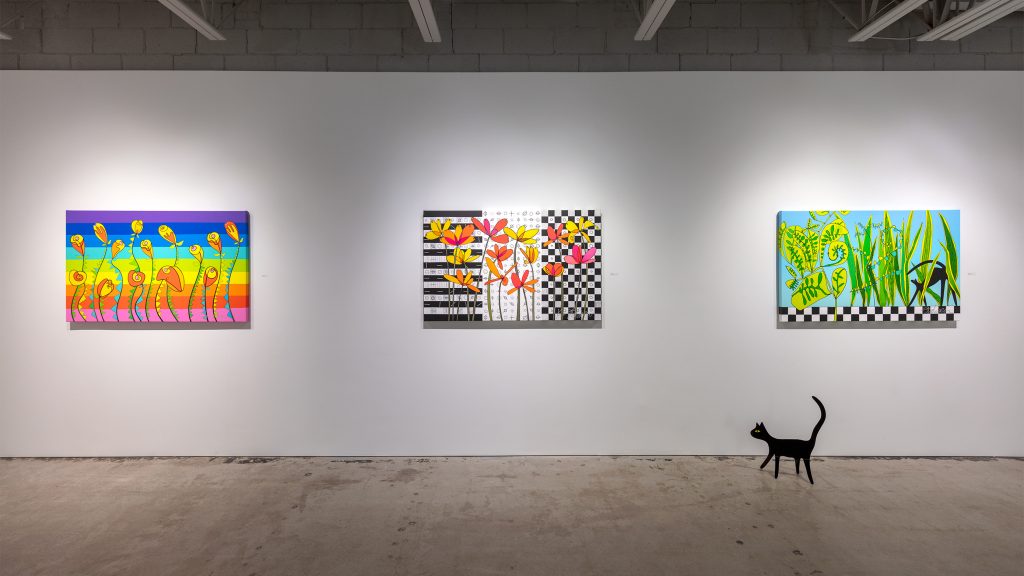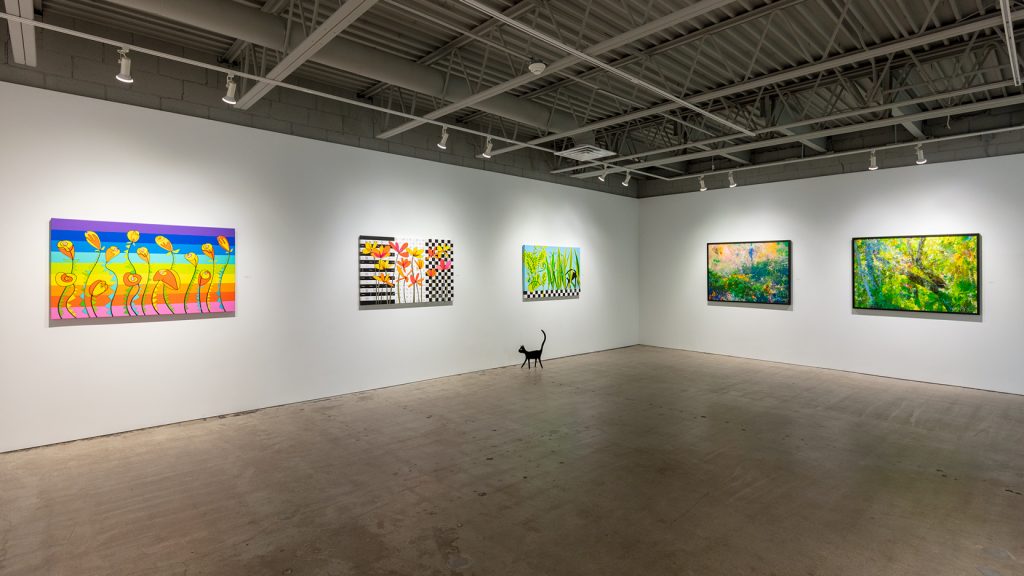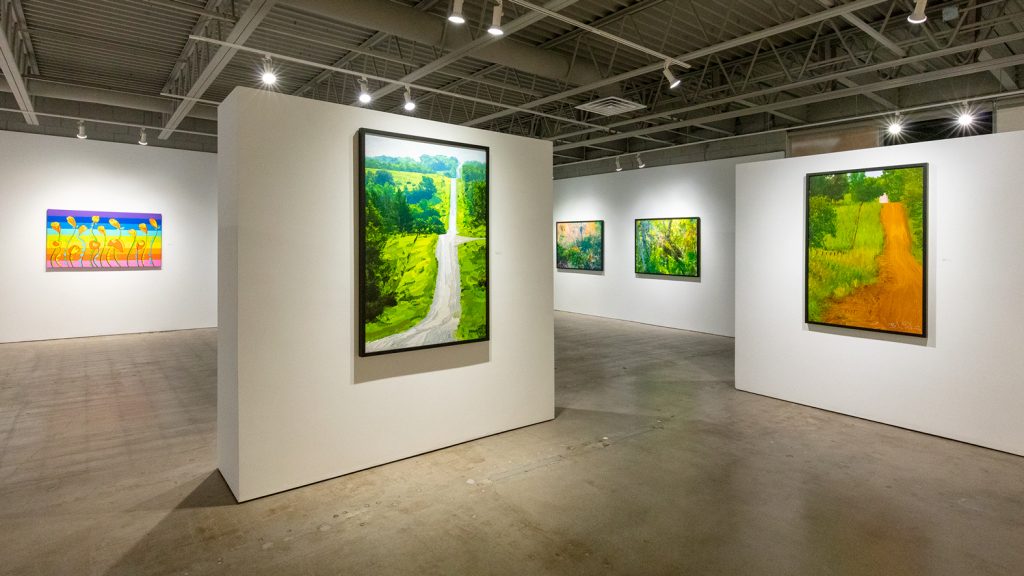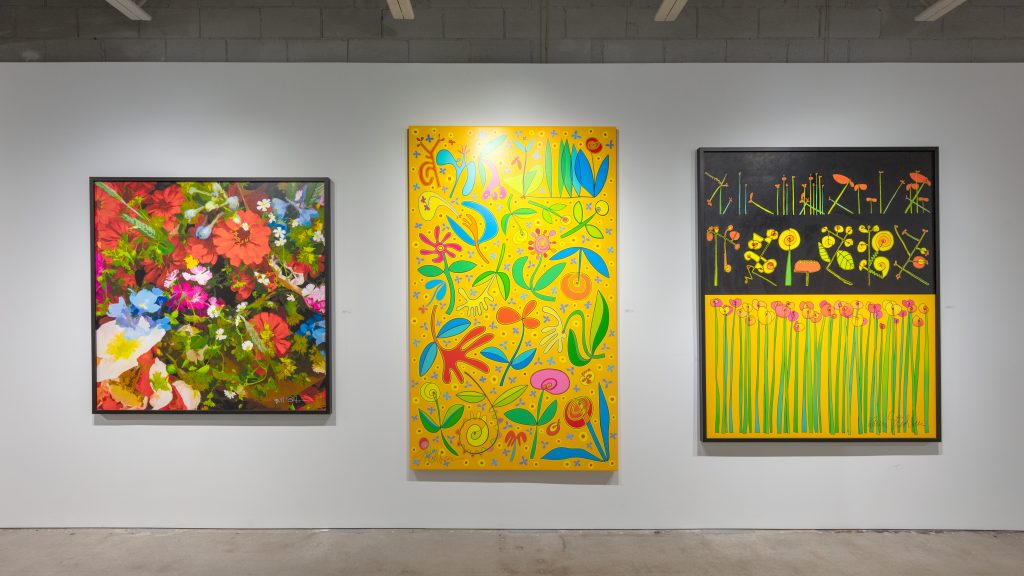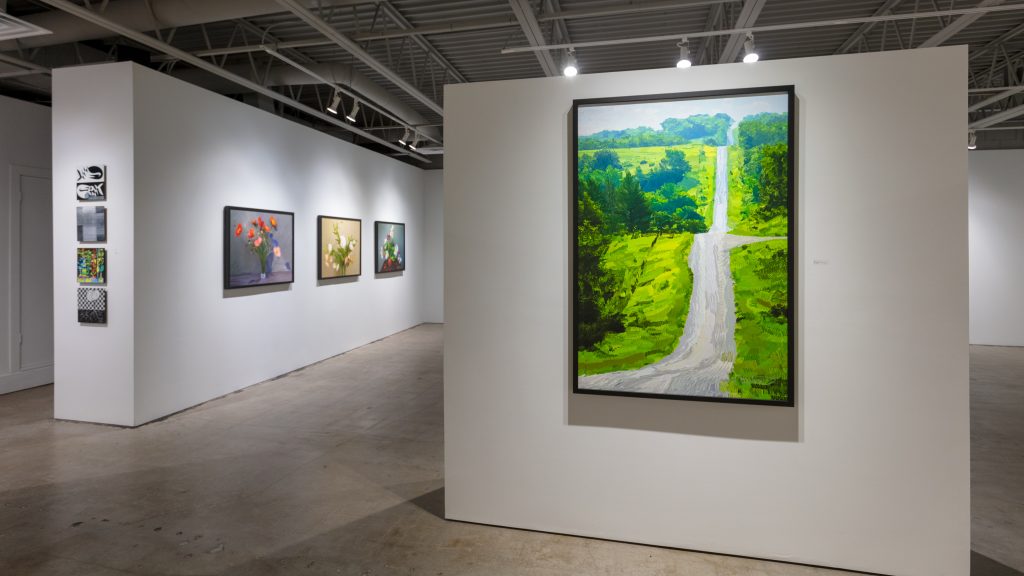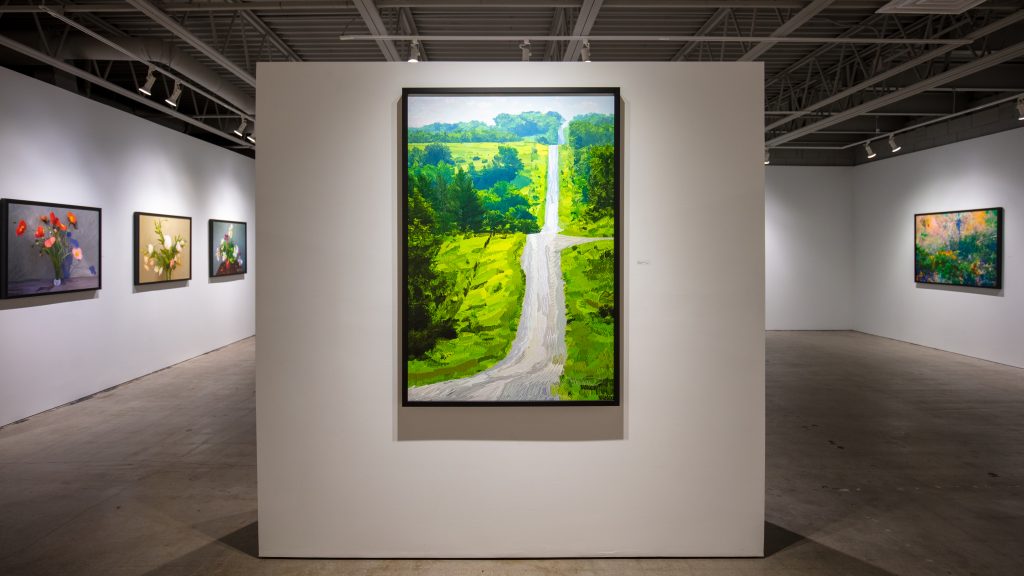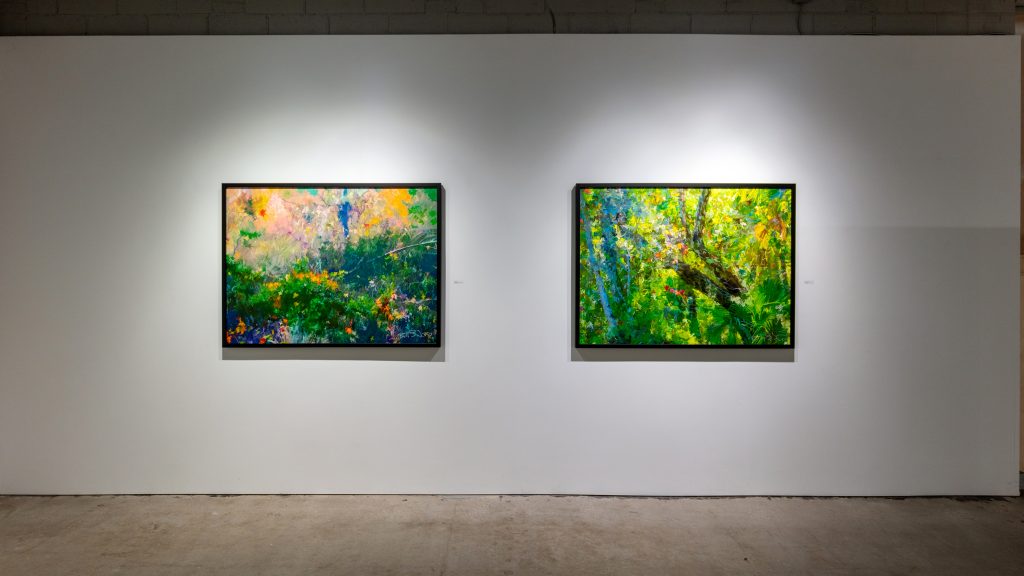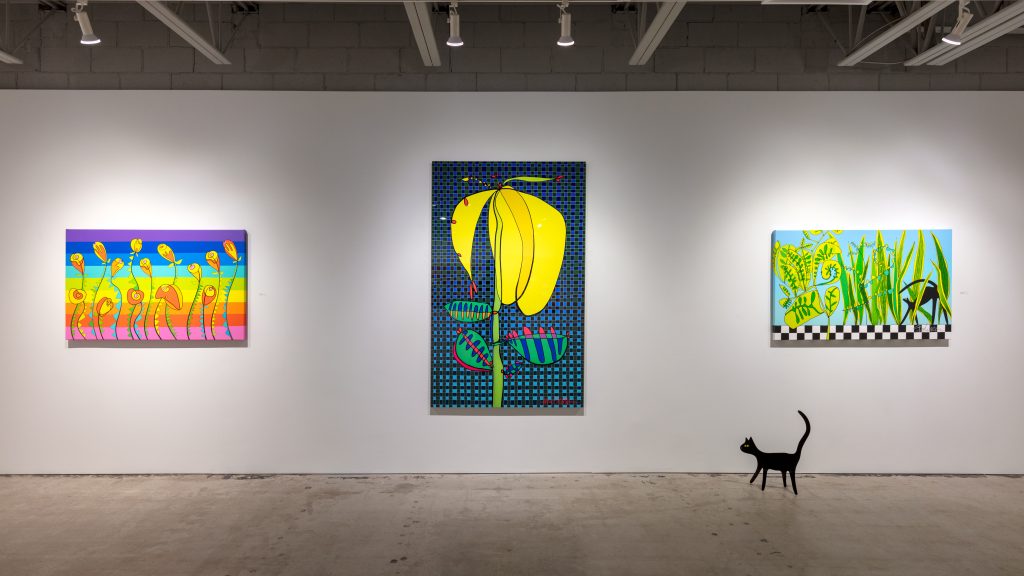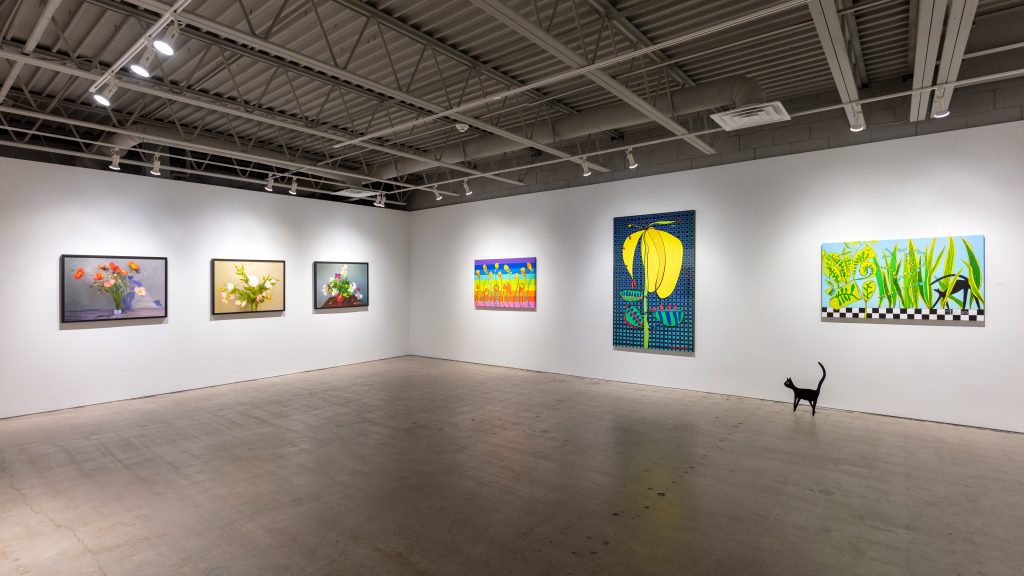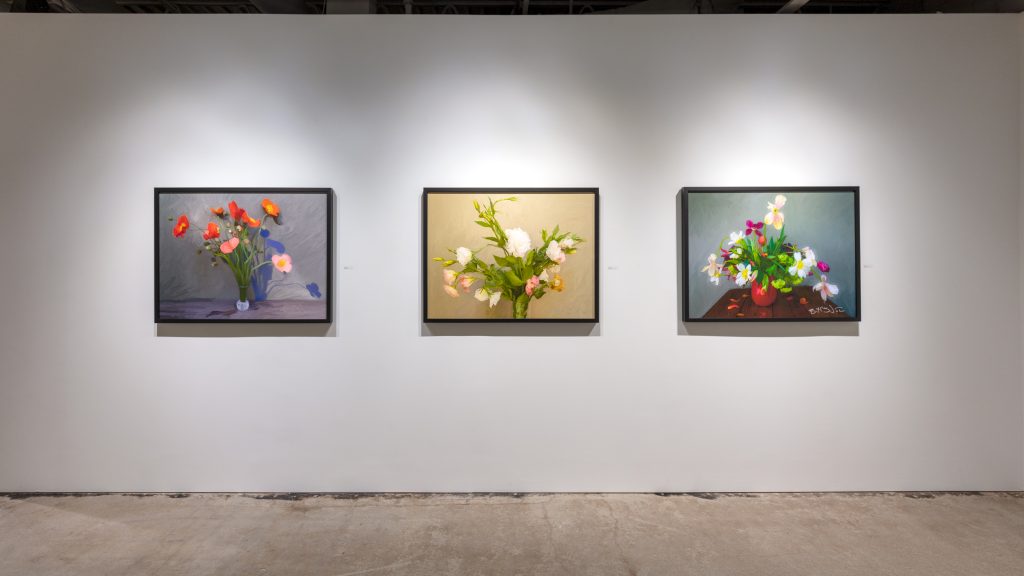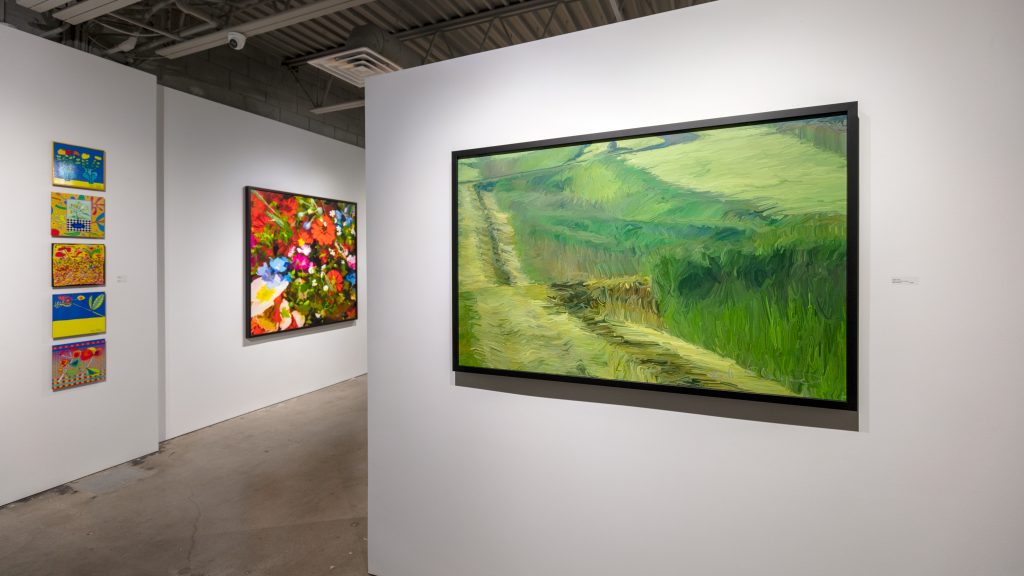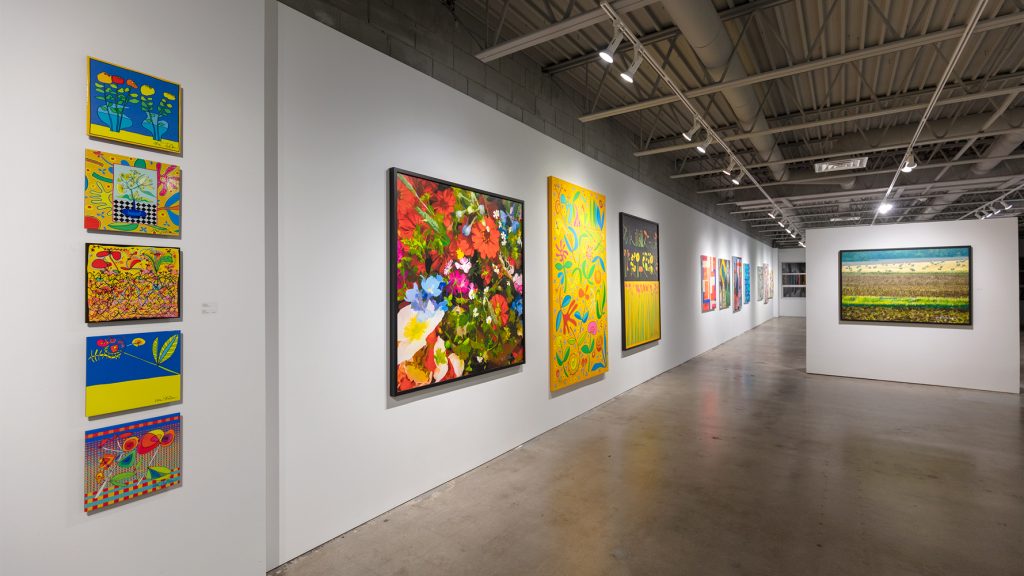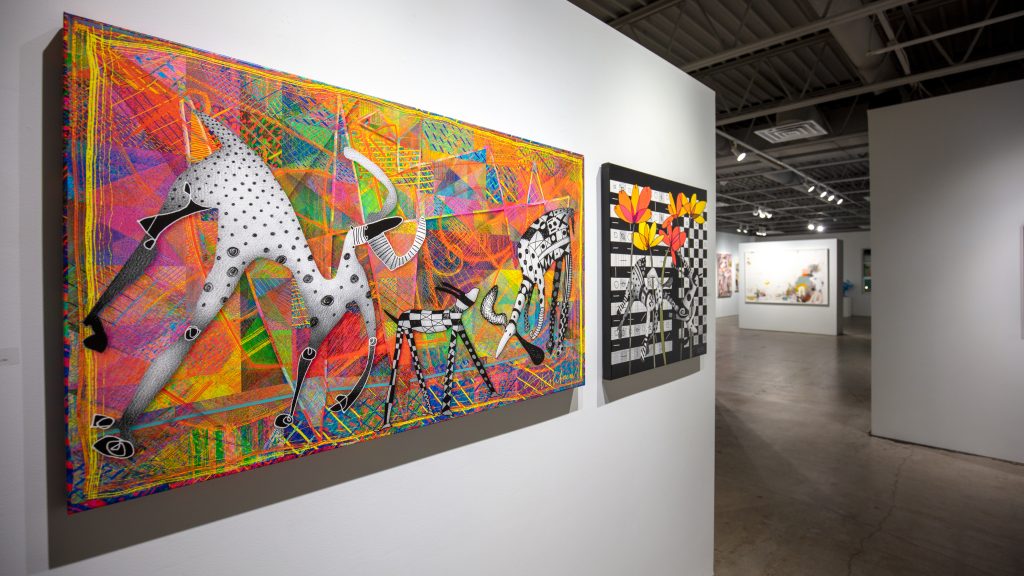TEXT BY MICHAELA MULLIN | VIEW IMAGES
Karen Strohbeen & Bill Luchsinger 2022
Indoor | Outdoor
Karen Strohbeen and Bill Luchsinger continue to create delightful digital paintings, reflecting and offering new perspectives. The use of color in their respective and very different representational digital paintings evinces sunlight and photosynthetic yields in the natural world, as well as architectural and sculptural gestures in the built world.
These paintings tell small stories, illuminating moments and spaces that we might often not have time to stop for. In pausing these, Strohbeen and Luchsinger show the exuberance and abundance surrounding us. And still, they somehow capture the movement of traffic, wind, and sound. Rolling hills and bales meet dancing flowers on checkered pattern. Large bouquets of vased stems meet abstract shapes in flight. The greenery of Luchsinger’s landscapes vibrate like a breeze perpetually blows within them. And Strohbeen gifts medium and message with her rainbow-bright paintings.
“Row of Colors,” for instance, holds a troupe of fourteen dancing flowers in front of a flag of colors. Each stem stands and the group finds a perfect balance of growth, the tallest reaching just at and over the purple band at the top. “Life Underground” focuses on above and below. The roots of these flowers are depicted in lines and hash marks, serpentining, intertwining, creating beautiful linear knotting beneath ground level. But there is already the beginning of life below—red dots as the idea of flowers-to-come, mixed soil in yellow and pink and blue— because the sun gets in, the dirt transforms, and the water flows and snakes through to feed everything.
One of the images that will soon grace Ingersoll Avenue on new DART bus shelters, “Field of Flowers,” is what it’s titled, but the field here is not a linear perspectival landscape but rather a color field of yellow holding stems, blooms, and dots as seeds or abscissional parts, like amber. “Two Vases,” however, uses linear perspective to show two vases, each with cut flowers and equal amounts of water in them. Upon a table or shelf, the odd number of stems, three in one, two in the other, strike a fine spatial balance. Strohbeen’s works are elegant in composition. This simple still life, with color field background, manages to be voluminous in its economy.
Luchsinger’s still lifes do the same, in a quieter way. “Red Vase” holds a wild bouquet in repose, its tulip petals shedding onto a woodgrain tabletop. Luchsinger’s realism is so ripe and atmospheric; he brings the out of doors inside to exist with walls and objects. As in “Green Wall,” too, he places a bundle of poppies into a small glass vase; against a green-grey wall, his digital strokes make each individual flower shadow dance on its backdrop.
The painting, “Hills,” takes the viewer on a road trip up and over three hills, inducing movement of body by motion of eyes. The grass and trees’ greenness hug the gray road clearly, holding it in place as a sturdy path of travel. “Country Road,” evokes a slower, more malleable road, with shorter visibility and a more enclosed feeling of being ‘within’ nature. The grass and the road here appear to meet and blur, and the hill, less discernable, presents the mystery of not knowing what’s on the other side.
Each small mark, stroke, and dab in “Orange Leaves” and “A Few Red Leaves” emerges a cumulative visual aphorism. “A Few Red Leaves” is a cropped view of a much thicker wooded area and becomes the viewer’s frame into lush leaves and their turning. In “Orange Leaves,” the foreground accumulates into sharper focus, and as the eye travels up and back, the compositional frame opens to more color, more space, and a shimmering of lightness and whiteness that compels one to breathe and linger.
Exhibit Images
